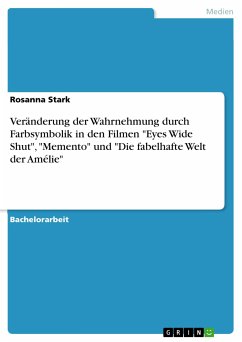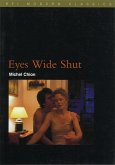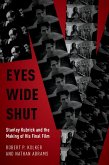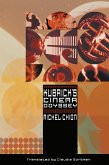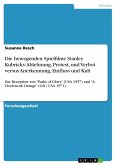Seminar paper from the year 2004 in the subject Film Science, grade: 2,0 (B), University of Cologne (English Seminar), course: Film Makers at Work, language: English, abstract: Film has for a long time been neglected as an art: Sophisticated analysis has mainly been dealing with written literature as 'the real thing'. In recent years the making of films has become more and more accepted as an art. Films are analysed and dealt with at universities and have become an essential part of school curricula. Nowadays cinematic theory is treated equally to written literature and "as a fully matured art, film is no longer a separate enterprise but an integrated pattern in the warp and woof of our culture" . In order to develop an ability to understand this art one has to learn to read its codes and interpret their meaning. The following paper will deal with the role of communication in film and examine different levels on which filmic articulation takes place. Communication is an indispensable element for films, not only do characters communicate on the level of the plot but also the process of creating, showing and perceiving a film can be regarded as communication. It is this communication that allows the course of an action to be told and understood in the first place. A film is information, it is a message that is transmitted to a recipient, i.e. the audience. There are, however, problems to define who the sender of this message is. In Chapter 2 of this essay I will try to find a solution to this problem. Chapter 3 will put a focus on communication between the characters in this movie including some ways of non-verbal communication. Chapter 4 deals with a special way of communication which is a central point in Kubrick's film: I will show how the unconscious can send messages to the conscious and how these messages can be interpreted. A lot of parallels can be drawn between film and written literature. There are, however, some vital differences between the two genres. I will therefore make general comparisons between the language of books and that of cinema where it appears important and promotes understanding. I will apply examples from the movie "Eyes Wide Shut" (1999) by Stanley Kubrick to illustrate the theoretical approaches of my work. The main points of this paper are summarised in a conclusion in Chapter 5.
Dieser Download kann aus rechtlichen Gründen nur mit Rechnungsadresse in A, B, BG, CY, CZ, D, DK, EW, E, FIN, F, GR, HR, H, IRL, I, LT, L, LR, M, NL, PL, P, R, S, SLO, SK ausgeliefert werden.



